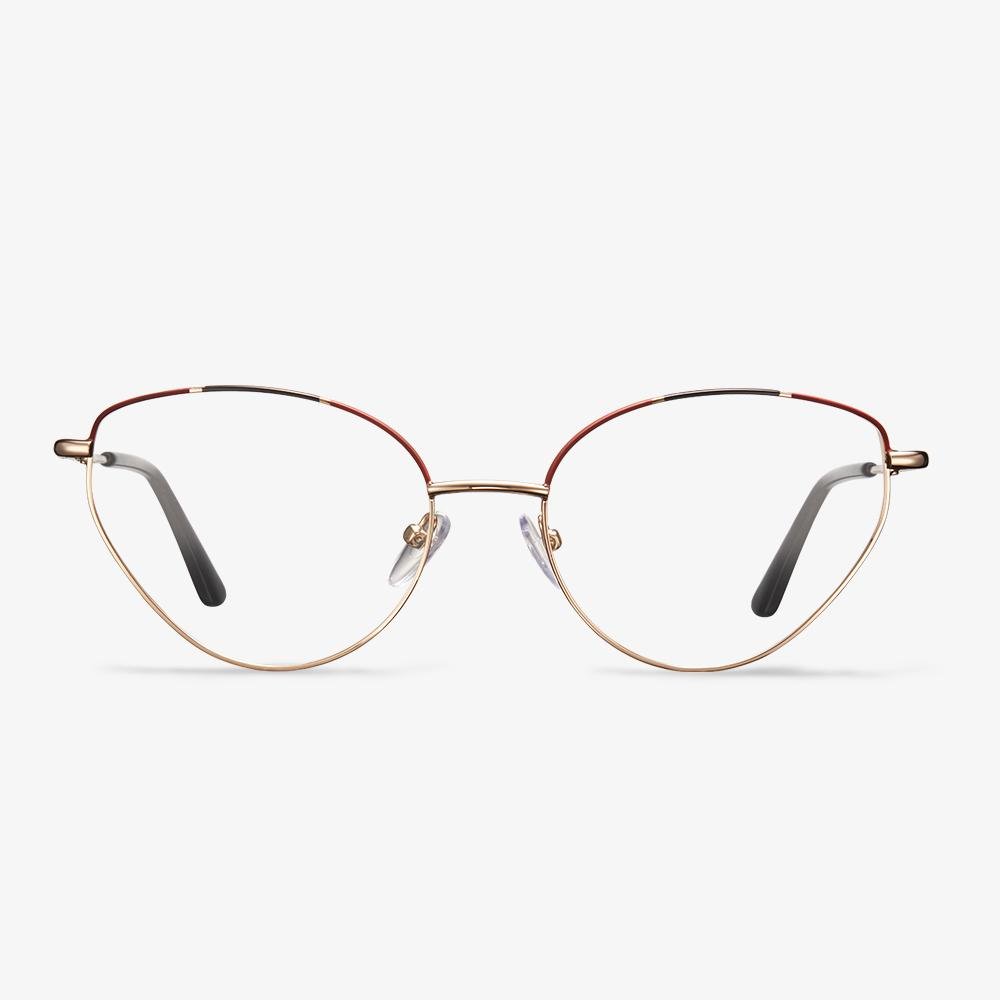Can You Put New Lenses in Old Frames?
In this section, we will show you how to replace new lenses with old frames. In general, optical shops will replace the lenses for you if your frames are in good condition and the shapes of the lenses is not too complicated.
So, can you put new lenses in old frames? Of course, you can do that if your old frame is good and shape of lenses is not too complicated.
However, glasses lens replacement depends on the quality of your existing frames, their conditions, and your prescription specifics. Not every pair of sunglasses or glasses for that matter can be reglazed. Sometimes fresh frames are required to match your new lenses. By far the most common reason for this would be because the existing frame is becoming brittle or is otherwise at risk of breaking. There is no point putting beautiful new lenses into a frame that breaks either during fitting or soon after.
In addition, when considering glasses lens replacement, you need to consider the materials of frames. In general, plastic frames are more likely to become brittle with age than metal frames. Of course, there are some other factors to be considered.
Features of TR90 Frame
It has the characteristics of wonderful toughness, crash resistance, wear resistance, and low friction coefficient, which can effectively prevent damage to the eyes and face caused by the fracture and friction of the frame during the movement. Because of its specific molecular structure, and chemical resistance, it is not easy to deform in a high-temperature environment. It's very elastic, and it doesn't deform. The use of thermoplastic materials in these frames provides pretty strength due to their flexible characteristics.
About the early domestic anti-reflection coating lens
Chinese coated lenses appeared in the mid-1980s. At that time, Europe (such as France and Germany) and Asia (such as Japan, Singapore, and Taiwan) had already launched coated lenses to the market, and the grade of lenses was evaluated based on the quality of the anti-reflection effect. Among them, Germany and France were the two leading countries in technology. Technically, the use of French original film material (referred to as H2) can reduce the effect by 99.98% (refers to the light transmittance, the same below). Almost you can not see the reflection, but the material is expensive. Therefore, the coating lens which is currently used in the world is born. The anti-reflection effect is controlled at about 98%, so the coating cost is greatly reduced. And it is accepted by consumers because it presents various colors, especially green. At the same time, because at the same time, it can be easily distinguished from non-coated lenses. It can reflect the high-grade film lens, and it is accepted by the sales staff.
h3>Transparent Frames
Transparent frames: as for glasses for round faces, the transparent frames aren’t going away anytime soon. Whether clear or with a faint tint, these frames are almost invisible from a distance and make it easy to clearly see the soft features of a round face. So, if you need a pair of glasses for a round face, try the transparent or clear frames.
Full-rim glasses: round faces look best against strong angular lines, while full-rim glasses can enclose and balance these features. So, you can take the full-rim glasses into consideration when choosing round-face glasses.
How to Get Used to Progressive Lenses?
It is common that your vision may change when you are over age 40. You can find it is happening when have to hold your favorite book, the daily newspaper, or a restaurant menu farther away just to read it. This is an eye condition called presbyopia. It is normal and almost all of us get it as we reach middle age.
This eye condition often can be corrected by progressive lenses which allow you to see objects from far to near clearly. With progressive lenses, you do not have to switch your glasses to see far or near objects frequently.
However, since progressive glasses have three different prescriptions in one lens, it may be difficult for some people to adapt to the new ones. So, in this post, we will show you how to get used to progressive lenses.
There are three processes for resin-changing lenses.
The incorporation method, known as bulk polymerization, is similar to the method of glass lens, that is, one or more photochromic dyes are directly incorporated into the polymer monomer of the substrate for bulk polymerization, and the lens formed after curing will change color. Discoloration dye is completely integrated into the resin lens substrate, so the lens made of color persistence is very good.
The uniformity of discoloration and the depth of color after discoloration are highly related to the thickness of the lens. Because the thickness of the lenses at all levels is different, there will be a color difference between the depth of discoloration and the uniformity, and the uneven phenomenon of high brightness is more obvious.
The film type is known as the coating method. It is the chromatic resin lens by coating or dipping in a layer of chromatic dye on the base of the resin lens. Because the coating covers the surface of the lens, the color uniformity is good. The coating, which is only about 0.05mm thick, does not provide enough molecules to make the lens dark enough, so the color is relatively less dark, and the discoloration lasts slightly longer.
Infiltration, known as the penetration method, is to use the principle of penetration, through the thermal diffusion method to make the color dye permeate the surface of the resin lens sheet material, with diffusion depth up to 0.15~0.20mm. The lens has a constant color change characteristic. There will be no inconsistency between the center and the surrounding color as the luminosity gets darker. The color-changing resin lens made by infiltration type has the benefits of uniform color-changing, small color difference, fast and thorough color-fading, which is the mainstream of color-changing technology at present.
What is the difference between sunglasses and polarized glasses for fishing?
Ordinary sunglasses reduce the sensitivity of the light, reduce the intensity of the reflection, and reduce the glare of strong light. Wear the glasses to see where there is a reflection on the surface of the water, the reflection still affects the vision.
Polarized sunglasses used for fishing can not only reduce the sensitivity but also refract the reflections to prevent the strong light from stabling the eyes. Wearing polarized sunglasses to see the reflections on the water surface will not see the reflections. Also, you can see underwater fish and scenery ( Depending on the clarity of the water), it is not an exaggeration to say that polarizers are an enhanced version of sunglasses.











































